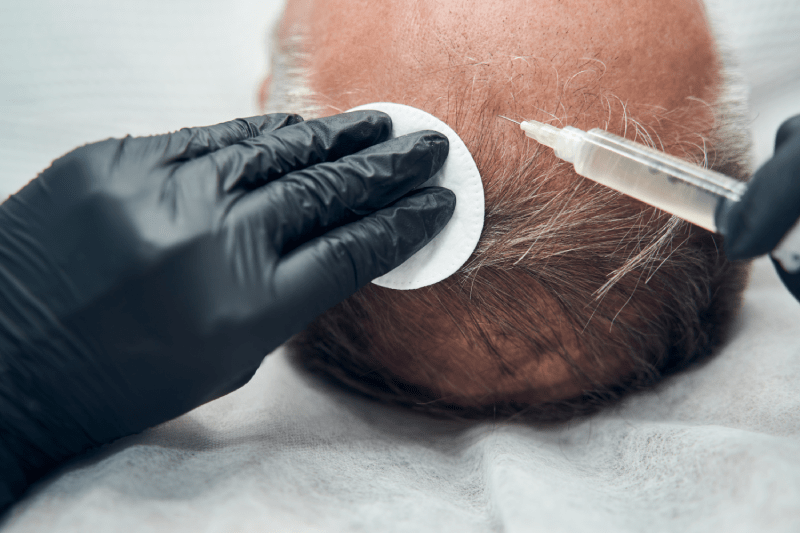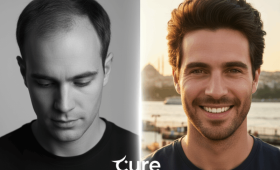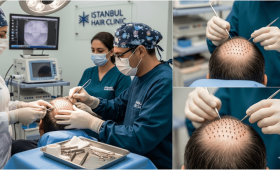Why Are Hair Transplant Prices So Low In Turkey?
The main reason why hair transplant prices in Turkey are lower compared to other European and Western countries is the significantly more favorable general cost of living and operational expenses. This affordability does not imply any compromise on the quality of materials used or the expertise of the surgical team. On the contrary, high competition within the country and state-supported health tourism policies encourage clinics to utilize the latest technologies and offer their services at more accessible prices. The experience gained through a high volume of cases, combined with economic advantages, allows high-quality and cost-effective solutions to be offered to international patients, establishing Turkey as a global hub for hair restoration procedures.
What Factors Determine Hair Transplant Cost?
The cost of a hair transplant is determined by several variables. The most crucial factors include the number of grafts (hair follicle units) planned to be transplanted during the operation, the preferred transplantation technique (such as FUE, DHI, or Sapphire), the contents of the all-inclusive package offered by the center, and the modernity of the technology utilized. Additionally, personal factors like the patient’s degree of hair loss and the condition of the donor area also influence the treatment plan. A detailed cost estimation is established based on a comprehensive preliminary evaluation and a customized treatment plan tailored to the patient’s specific needs.
What Is Included In The Package Prices In Turkey?
Hair transplant package prices in Turkey are generally offered as all-inclusive to cover all the needs of international patients. These packages fundamentally include the operation itself, all medical supplies used, the fee for the specialized team, necessary medications, and aftercare kits. Furthermore, many packages cover airport welcome and transfer services, accommodation for the duration of the procedure, and mandatory pre-operative blood tests. It is highly important for patients, when planning their travel, to thoroughly check how many nights of accommodation and which additional services are included in the package.
What Is The Difference Between FUE And DHI Techniques?
FUE (Follicular Unit Extraction) and DHI (Direct Hair Implantation) are the two main methods widely used in the field of hair transplantation. In the FUE technique, grafts are extracted one by one from the donor area, then channels are opened in the recipient area, and the grafts are placed into these channels. In the DHI technique, grafts are implanted directly using a special needle (Choi pen) without the need for prior channel opening. DHI offers the advantage of denser implantation and less bleeding, while FUE is generally preferred for transplanting larger areas. The choice of technique is determined by the patient’s hair structure and the density of hair loss.
Which Season Is More Suitable For Hair Transplantation?
Hair transplantation surgery can theoretically be performed in any season of the year, but some seasons may be more comfortable for the recovery process. Autumn and winter months generally make the recovery period easier due to less intense sunlight and a lower risk of sweating. Protection from the sun is critical for the survival of the transplanted grafts. Therefore, patients undergoing the procedure in the summer months must be much more careful and meticulous about protecting their heads from the sun. Low temperature and humidity during the healing process enhance patient comfort.
What Medical Tests Are Required Before The Surgery?
Before hair transplantation, standard medical tests are conducted to determine if the patient’s general health status is suitable for the operation and to minimize risks. These tests typically include screenings for infectious diseases such as HIV, Hepatitis B, and C, as well as a complete blood count. Tests checking the blood clotting time are also vitally important for surgical safety. These tests are usually performed upon your arrival in Turkey or immediately before the operation at the clinic, and the procedure does not start without the surgical team’s approval. This comprehensive screening is meticulously carried out solely to ensure patient safety.
How Is An Experienced Hair Transplant Team Identified?
Success in hair transplantation depends on the experience of the surgical team. When selecting an experienced team, one should focus not only on the price but also on the clinic’s track record in this field. It is important to examine the number of cases performed by a specialist or team, the variety of before-and-after photos provided, and international reviews indicating patient satisfaction. A center that has been exclusively providing hair transplant services for many years and consistently follows new technologies are key criteria demonstrating the team’s expertise and reliability. The focus should be on researching the general competence of the team rather than specific names.
What Is The Typical Duration Of The Procedure?
The duration of the hair transplant procedure varies depending on the number of grafts to be transplanted and the technique used. An average FUE or DHI operation can typically last between 6 to 9 hours. This duration includes the collection of grafts, the opening of channels (FUE) or implantation (DHI), and short breaks provided in between. An operation starting in the morning is usually completed in the afternoon or evening hours. Rest and nutrition breaks are regularly provided throughout this long period to ensure patient comfort, thereby preserving the patient’s energy levels.
How Are Accommodation And Transfers Arranged In Turkey?
A large portion of hair transplant packages in Turkey cover the accommodation and transportation needs of international patients. Generally, your pick-up from the airport, and transfers to the clinic and accommodation are organized by the clinics themselves. Agreements are made with hygienic and comfortable hotels close to the hospital for accommodation, and this is offered as part of the package. Before your trip, it is important to clarify the accommodation options offered through an intermediary like Cure Holiday, the hotel’s distance to the clinic, and the transfer details, which is crucial for your travel comfort.
What Is The Hair Transplant Recovery Process Like?
The recovery process after hair transplantation is generally fast, with the first 14 days being critical. Slight redness and swelling can be observed in the donor and recipient areas immediately after the operation. The first wash is performed approximately 2-3 days later, and the crusting process begins. These crusts completely fall off within 10-14 days, and the skin returns to normal. Full recovery and return to normal life take about two weeks, but it takes several months for the transplanted hairs to start growing strongly. Adherence to all aftercare instructions provided during this process is fundamental to success.
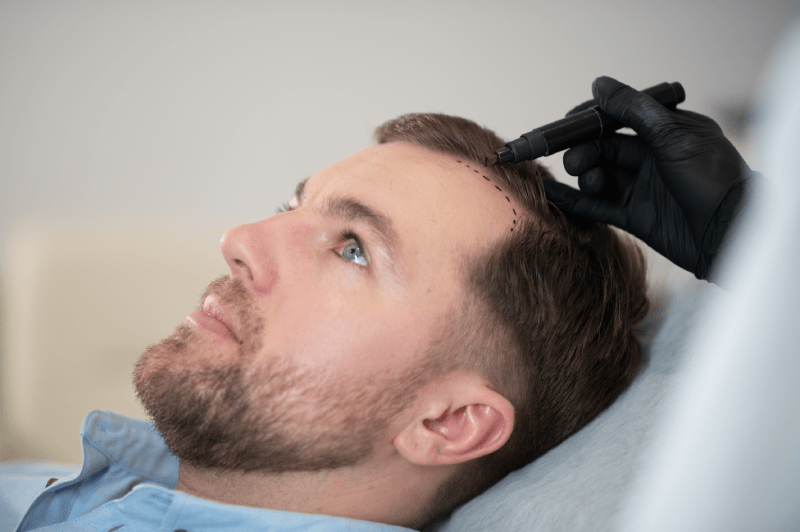
When And How Is The First Wash Done After Implantation?
The first wash after implantation is usually performed on the 2nd or 3rd day after the operation, either at the clinic or with detailed instructions provided by a specialist team. This wash must be done with extreme care and sensitivity to avoid damaging the transplanted grafts. It involves the application of a special lotion for softening, followed by gentle lathering with a specialized shampoo using only the fingertips. This initial wash initiates the crusting process and reduces sensitivity in the recipient area. The patient must follow the washing instructions at home with the same diligence for the subsequent 10 days.
Is A Hair Transplant Guarantee Provided?
Since hair transplant results can vary from person to person, some clinics may offer a graft guarantee under certain conditions. This guarantee is usually provided for a specific percentage (e.g., 90%) of the transplanted hair follicles to grow permanently. However, the scope and duration of the guarantee can differ across centers. Compliance with conditions such as the patient abstaining from smoking and alcohol, maintaining regular aftercare, and taking prescribed medications are typically part of the guarantee terms. It is important to clarify these guarantee conditions and the details of a possible touch-up (revision) operation before commencing treatment.
What Are The Important Criteria For A Successful Hair Transplant?
A successful hair transplant requires multiple criteria to align. Foremost among these is a high survival rate of the grafts harvested from the donor area, and the transplanted hair providing a natural appearance. In a successful procedure, the hairline should be designed according to the patient’s facial structure, and the direction of implantation must mimic the natural angle. Additionally, minimizing damage to the donor area and ensuring minimal scarring after the operation are also criteria for success. An expert team aims to meticulously apply all these aesthetic and scientific criteria to achieve the best possible outcome.
How Do I Know If I Am A Suitable Candidate For Hair Transplantation?
Your suitability for a hair transplant is determined through a comprehensive preliminary assessment. The most crucial factor is having a sufficient and good-quality donor area (usually the back of the head) for extraction. It is also important that your hair loss has reached a certain level and has stabilized; transplantation is generally not recommended for individuals under 20 or those in an active shedding phase. The absence of a chronic disease in your medical history (such as uncontrolled diabetes or serious heart conditions) that could hinder the operation is another fundamental prerequisite for candidacy.
How Does The Number Of Grafts Affect The Cost?
The number of grafts is the most fundamental variable that directly affects the cost of a hair transplant. While some clinics in Turkey may structure pricing based on maximum grafts rather than the exact number transplanted, some centers apply per-graft pricing. As the number of grafts increases, the duration of the operation extends, more medical supplies are used, and the surgical team works for a longer period, which naturally increases the total cost. The number of grafts required by the patient is determined by an analysis performed before the operation, based on the level of hair loss.
What Is Sedation Application And Is It Included In The Price?
Sedation is a mild anesthesia technique applied during hair transplantation to help the patient relax and minimize pain perception. The patient is put into a semi-sleep state using drugs administered intravenously in addition to local anesthesia. This provides great comfort, especially for patients with a fear of needles or those who find it difficult to remain still during the long operation. Many modern hair transplant centers in Turkey have made sedation a standard service, including it in the package price to enhance patient comfort and provide a stress-free experience.
Are There Travel Restrictions After Implantation?
After a hair transplant operation, patients must comply with certain restrictions to be able to travel safely. Immediately after the operation (the first 24 hours), air travel is generally not recommended due to bandaging and general observation. Most specialists recommend patients travel by air at least 48 hours after the procedure. During the flight, care must be taken not to hit the recipient area, and it is important to move frequently during long flights to reduce the risk of clotting. The recommended 7-10 day stay in Turkey allows you to safely navigate these restrictions.
What Technologies Do Clinics In Turkey Use?
Leading hair transplant centers in Turkey utilize the most up-to-date technologies accepted in global standards. The most common among these are Micro Motors used for graft extraction from the donor area, Sapphire FUE blades that provide less trauma and faster healing during the channel opening phase, and DHI (Choi) pens that allow grafts to be implanted one by one. Additionally, computerized imaging systems used for detailed hair and skin analysis before surgery are also part of the technological infrastructure. These technologies aim to maximize both the success of the transplant and the patient’s comfort.
How Many Days Is It Necessary To Stay In Turkey For Treatment?
The minimum period recommended for international patients to stay in Turkey for hair transplant treatment is typically 3 to 4 days. This period covers the operation on the first day, bandage change and control on the second day, and usually the first wash and aftercare instructions on the third day. Some patients may prefer to stay 5-7 days to spend the recovery process more comfortably and ensure complete control. When planning your treatment, it is important to consider the recommended length of stay provided by an intermediary like Cure Holiday to complete the process smoothly and safely.
How Should Smoking And Alcohol Use Be Stopped Before Hair Transplantation?
Smoking and alcohol use before and after hair transplantation are critical factors that negatively affect the success of the operation. Smoking constricts blood vessels, blocking the oxygen and nutrient flow needed by the transplanted grafts, which reduces the graft survival rate. Alcohol increases the risk of bleeding during the operation by thinning the blood and slows down the healing process. Therefore, specialists strictly recommend that both smoking and alcohol be completely ceased at least 7-10 days before the operation and not be consumed for the first 14 days after the procedure.
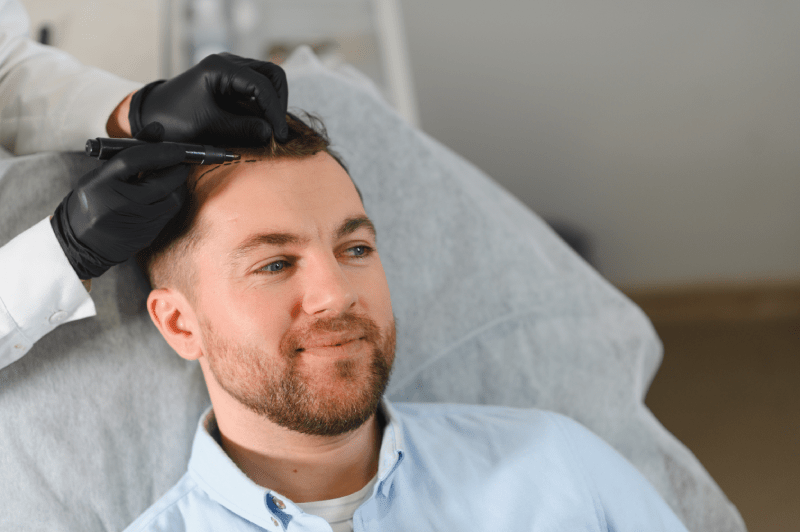
How Is Post-Operative Pain Control Ensured?
Since hair transplantation is performed under local anesthesia, no pain is felt during the procedure. A slight tightness or pain may be felt when the local anesthesia begins to wear off. However, this pain is easily controlled with simple painkillers prescribed by the surgical team and included in the package. A slight discomfort on the first night is normal, but patients can usually return to daily activities the next day without even needing painkillers. Pain control is a closely monitored process for the patient’s comfort throughout the initial recovery phase.
How Long Do Swelling And Bruising Last After Hair Transplantation?
It is an expected occurrence for swelling (edema) and rarely mild bruising to form after a hair transplant, especially around the forehead and eyes. Swelling usually peaks around the 3rd day after the operation and then quickly subsides. For most patients, swelling and bruising largely disappear within 5 to 7 days. Adhering to instructions such as sleeping in the recommended position (on the back with high pillows) and applying cold compresses helps to reduce swelling and accelerate the healing rate.
How Long Does It Take For Hair Transplant Results To Be Fully Visible?
The final and fully satisfactory visibility of hair transplant results is a long process, taking an average of 12 to 18 months. The transplanted hairs enter the shock loss phase within the first 2-4 weeks. Then, from the 3rd month onwards, new and permanent hairs begin to grow slowly. About 60-70% of the hair usually grows out by the 6th month, but it takes over a year for the hair strands to thicken, strengthen, and reach full density. Patience during this period and allowing time for the results to develop is essential.
Does Permanent Damage Occur In The Donor Area?
When performed using correct techniques (especially FUE) and by an experienced team, permanent damage that compromises the aesthetics of the donor area (usually the back of the head) does not occur. During graft harvesting, the work is minimally invasive, and usually no more than 25% of the hair follicles in the area are removed. This leaves scattered, pinprick-sized scars that can be covered by the hair at the back of the head after the area heals. Maintaining the natural density and healthy appearance of the donor area in the long term is one of the most important goals of surgical planning.
Which Hair Types Are More Suitable For Hair Transplantation?
The most suitable hair types for hair transplantation are generally thick-stranded and curly or wavy hair. Thick-stranded hair maximizes aesthetic results because it provides a more voluminous and dense appearance even with the same number of grafts. Curly or wavy hair is more successful at naturally concealing the angle and direction of the transplanted hair follicles in the recipient area, which creates a fuller and more natural look. However, thanks to modern techniques, it is possible to achieve successful results even in individuals with fine and straight hair.
When Can I Start Exercising After Hair Transplantation?
The process of starting exercise after a hair transplant varies depending on the type of activity performed. Immediately after the operation, light walking is encouraged to increase blood circulation and reduce the risk of clots. However, heavy sports and cardio that can cause sweating in the recipient area, seriously raise the heart rate, or put pressure on the scalp must be strictly avoided for at least 14 days. Risky activities such as swimming, football, or contact sports are considered safe to resume only after complete healing is achieved, typically after the 1st month.
How Should Long-Term Hair Care Be Maintained?
Long-term hair care after a transplant is important for maintaining the health of both the transplanted hair and existing hair. Even when returning to a normal hair care routine, it is recommended to use gentle, chemical-free shampoos and conditioners whenever possible. Supplementary treatments such as PRP (Platelet Rich Plasma) or mesotherapy may be applied regularly, as advised by a specialist, to support hair strengthening. Protection from the harmful effects of the sun and maintaining a healthy diet are fundamental habits that should be continued long-term to maximize the life of the transplanted hair.
What Should I Consider Before Coming To Turkey?
Before traveling to Turkey for a hair transplant, you should ensure you have clarified the package content and cost details offered by the clinic. You must strictly follow instructions to cease the use of cigarettes, alcohol, and blood-thinning medications before the surgery. It is also important to bring comfortable clothes with buttons or zippers (to avoid contact with the recipient area), have a wide-brimmed sun hat (that won’t touch the grafts), and purchase travel insurance. Planning with Cure Holiday will help you organize all these details seamlessly.
Is Interpreter Support Available During The Hair Transplant Process?
The vast majority of hair transplant centers serving international patients in Turkey provide professional interpreter support to eliminate language barriers. In addition to English-speaking staff, interpreter services are often offered in different languages such as Arabic, German, and French. This service is vitally important not only on the day of the operation but also during the preceding consultation stages, when giving aftercare instructions, and for communication throughout the trip. Interpreter support is indispensable for the patient to feel secure and receive accurate information about the entire process.
When Do The Crusts Formed After Implantation Fall Off?
The crusts formed after implantation are a natural part of the healing process, resulting from the drying of blood and tissue fluid around the grafts. These crusts generally start to soften from the first wash onward. It is aimed for these crusts to completely fall off within 10 to 14 days with regular and gentle washing performed according to the expert team’s instructions. The complete cleansing of the crusts by the end of this period is of great importance for the recipient area to breathe healthily and continue healing. Patients must strictly refrain from picking or scratching the crusts themselves.
What Is The Crisis Period (Shock Loss) And When Does It Occur?
Shock Loss (Shedding Phase) is a natural process that can start anytime from the 2nd week to the 3rd month after a hair transplant, where a large portion of the transplanted hairs temporarily falls out. This situation occurs because the transplanted hair follicles enter the resting (telogen) phase as a reaction to surgical trauma and stress. Although it may seem alarming to patients, only the hair strands are shed; the hair follicles remain intact and begin to regrow permanently starting around the 3rd month. This is not a failure but an expected and healthy stage of the process.
What Additional Hair Treatments Are Offered In Turkey?
In addition to the hair transplant operation, centers in Turkey generally offer supportive treatments aimed at strengthening hair follicles and accelerating the healing process. Chief among these are PRP (Platelet Rich Plasma) and Mesotherapy. In PRP, platelet-rich plasma obtained from the patient’s own blood is injected into the hair follicles to stimulate growth factors. Mesotherapy involves injecting vitamins, minerals, and amino acids that nourish the hair directly into the scalp. These supplementary treatments may sometimes be included in the package price or offered for an additional fee, aiming to enhance the quality of the transplant results.
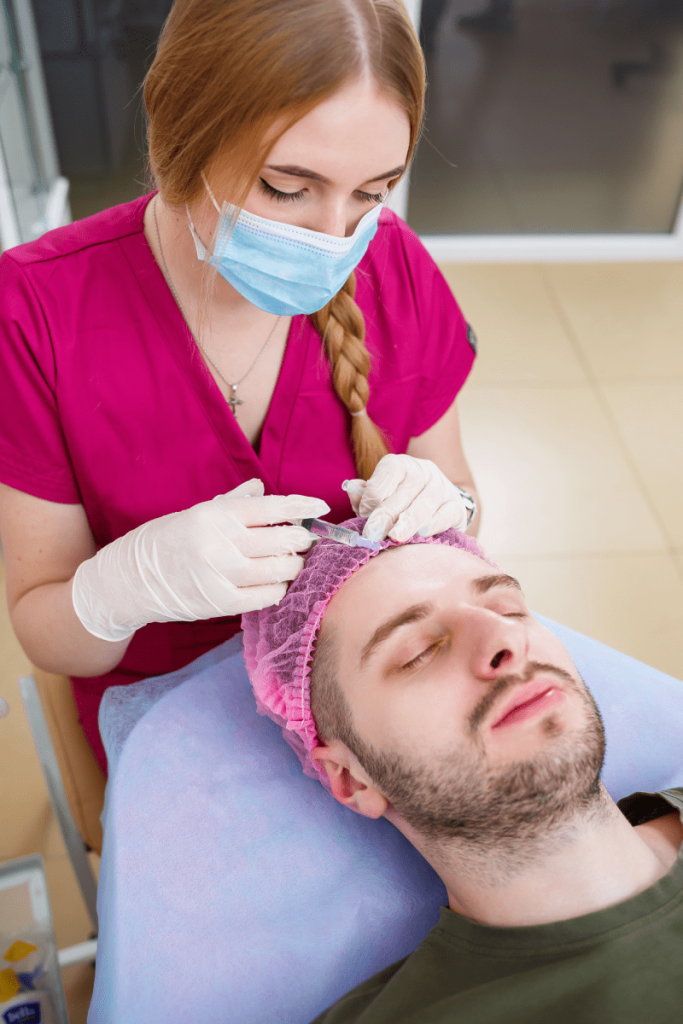
What Is Important In Clinic Selection Besides Cost?
While cost is an important factor, there are criteria more crucial than cost in clinic selection. Factors such as the clinic’s hygiene and sterilization standards, the quality of the hospital environment where the operation will take place, the modernity of the medical equipment used, and the surgical team’s exclusive focus on hair transplantation are priorities. Furthermore, the clinic’s transparency and accessibility in pre- and post-operative communication, and the support provided for long-term follow-up, are criteria more valuable than cost in terms of patient satisfaction and safety.
What Is The Importance Of Pre- And Post-Operative Nutrition?
Nutrition before and after a hair transplant directly affects the speed of recovery and graft survival. Before the operation, it is important to avoid foods with blood-thinning effects (green tea, fish oil, etc.). After the operation, a high-protein diet (meat, eggs, legumes) and foods rich in vitamins/minerals (especially B vitamins, Zinc, Iron) are mandatory. Protein is the building block of new hair strands and is a fundamental requirement for rapid healing. Adequate water consumption is also vitally important for general body and scalp health throughout the entire recovery period.
Are Medical Tourism Intermediary Companies Reliable And What Advantages Do They Offer?
Specialized medical tourism intermediary companies like Cure Holiday play a key role in making your entire treatment process safe and trouble-free. These companies collaborate with clinics that meet the highest standards in Turkey and create guaranteed, transparent price packages for patients. The biggest advantages they offer are the organization of travel, accommodation, and transfers, interpreter support, and the coordination of post-operative long-term follow-up services. A reliable intermediary reduces the stress associated with undergoing treatment in a foreign country and allows the patient to focus solely on recovery, thereby minimizing risks.
